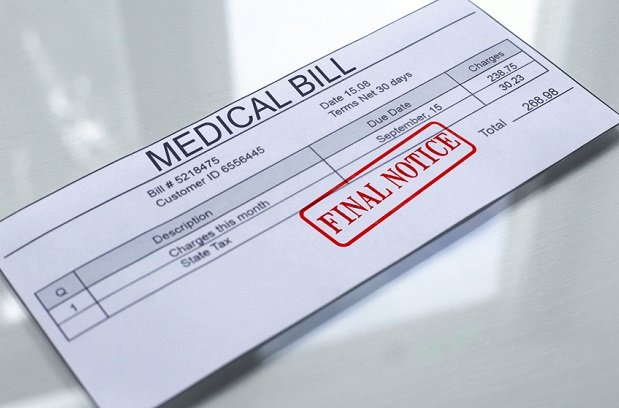 One-third of those with debt said they were paying off $4,000 or more.
One-third of those with debt said they were paying off $4,000 or more.
Few people could have predicted 18 months ago that the pandemic would linger into the fall of 2021. As serious as the medical consequences have been, the financial impact on many Americans may continue to be felt even after the pandemic eventually winds down.
"People with chronic health problems tend to have higher health-care expenses, even if they have insurance coverage," said Sara Collins, vice president of health care coverage for The Commonwealth Fund. "For some people with ongoing problems, medical debt could be a lifelong issue."
Recommended For You
Collins shared her insights into medical debt and COVID-19 in a September 14 webinar sponsored by the Society for Advancing Business Editing and Writing. She shared statistics from a survey by her organization and newly released U.S. Census information.
"Our survey found that the uninsured rate was unchanged and perhaps even lower than it was in 2019, and the new data from the census confirm this finding," Collins said. "But the bad news is that we still have 28 million uninsured and the rates continue to be highest among people with low incomes and Hispanic and black adults.
"The other bad news is that our country continues to have a chronic health-care unaffordability problem. Large numbers of adults continue to suffer financially even if they are covered by insurance. More than a third of adults reported that over the previous year, either they or a family member had problems paying their medical bills. They had been contacted by a collection agency, had to change their way of life to pay their bills or were paying off bills that had been accumulated over time."
Not all sectors of the economy are affected the same.
"The service industry was really hard hit," she said. "Black, Hispanic and lower-income adults disproportionately work in many of these jobs. These groups were more likely to report having lost income during the pandemic, and these are sectors where fewer people get coverage through their jobs. There was not a lot of focus on the fact that a lot of people in these hard-hit industries already were uninsured."
Nearly two-thirds of survey respondents reporting medical debt said they or a family member who incurred debt were uninsured at the time. One-third of those with debt said they were paying off $4,000 or more. More than half of black adults said they had problems with medical bills, compared with about 32 percent of white adults.
Moreover, medical debt affects other aspects of people's financial health:
- 43% of people who reported a problem paying a medical bill said they received a lower credit score as a result.
- 35% exhausted most of their savings to pay medical bills.
- One-fourth were unable to pay for basic necessities because of medical debt.
- 23%t were forced to delay educational or career plans.
Although it's not as widely reported as the personal impact, Collins said, rising medical debt also affects hospitals.
"The degree to which hospitals suffered adverse consequences depended upon the degree to which they rely on surgical and outpatient revenues and the extent to which those losses were offset by COVID patients," she said. "Those payments helped offset the lost revenues from shutting down elective surgeries. Federal emergency funds also were important for hospitals.
"Overall, wealthier and larger hospital systems have done OK, while smaller, rural, independent and safety-net hospital have really struggled. The cost of maintaining nursing and other staff is really affecting hospitals right now."
Although several provisions in the $3.5 trillion budget reconciliation bill under consideration in Congress may help, they don't address the most significant issues, Collins said.
"The piece that really needs attention is reining in deductibles and out-of-pocket costs in Marketplace plans, but that is not on the table in this reconciliation package," she said. "This will be the next place for Congress to look to protect people. We also know that high prices drive premiums and deductibles. To really get a handle and lower people's exposure, we need to focus on prices charged by providers."
© Touchpoint Markets, All Rights Reserved. Request academic re-use from www.copyright.com. All other uses, submit a request to [email protected]. For more inforrmation visit Asset & Logo Licensing.







